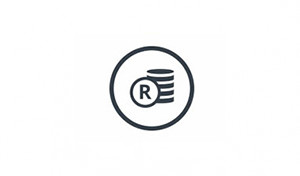5 Breast-cancer myths, busted!

Last updated on 22nd October, 2018 at 02:11 pm
One of the top five cancers to affect both men and women, breast cancer is a big deal. The good news? There are lots of things you can do to help reduce your risk, detect early signs and catch symptoms when the disease is still highly treatable. Let’s start by busting these common myths surrounding breast cancer, with help from radiation oncologist Dr. Tselane Thebe.
Myth: only women can get breast cancer
According to the National Breast Cancer Organisation, 1% of males are affected by breast cancer. While this might seem like a small number, a lack of awareness among men may result in diagnosing the cancer at an advanced stage, making it harder to treat. “Although their risk of breast cancer is low, it’s important that men are aware of the key symptoms which are typically quicker to spot and more clearly visible than in women, since men tend to have less breast tissue,” explains Dr. Thebe. “Some of the common symptoms for men include nipple bleeding and pain or skin ulceration.” If you spot any of these symptoms, it’s important to visit a health practitioner for a diagnostic check-up.
Myth: if the result of your mammogram screening was normal last year, you won’t need to have another screening the following year
A mammogram is an X-ray of the breast, to check for breast cancer. “The results of your mammogram won’t always remain the same,” says Dr. Thebe. “Each check is dependent on your medical history, and related to various risk factors (health-wise) that you may have. Your practitioner will set your examination date based on your personal risk factors: it can be in three years or in six months, it all depends on your personal needs.” Risk factors include things like having a genetic history of cancer in your family. For as long as you have breast tissue, you are at risk of breast cancer. It’s advisable that “from the age of 18, women attend a clinical breast examination every one to three years, and women after 40 should go more frequently – on a yearly cycle,” adds Dr. Thebe.
Both men and women should do a monthly breast self-examination to check for any physical or visual changes. This can be done by firmly (but gently) pressing the outer half of your right and left breast with your first three fingers. This works best if you lie down so the breast is as flat on your chest as possible. Remember: lumps don’t need to be painful to be considered cancerous, and if you notice anything unusual, consult your doctor.
Myth: there’s nothing you can do to lower your risk of breast cancer
“Although there have been no conclusions on the direct cause of breast cancer, it’s important to stay educated on the risk factors associated with breast cancer so you can take preventative measures,” says Dr. Thebe. “Maintaining a healthy lifestyle can help you minimise your risk of getting breast cancer: decrease your alcohol intake and exercise regularly to avoid obesity, as fat tissue may contribute to increases in oestrogen levels, which could increase your risk of breast cancer,” adds Dr. Thebe.
Myth: breast implants can cause breast cancer
According to Dr. Thebe, “the direct cause of breast cancer has not yet been found, so there’s no conclusion that breast implants cause breast cancer.” But if you have breast implants, it can be difficult to check for any symptoms relating to breast cancer. This is because it can be harder to feel lumps via self-examination, and because the X-rays used in mammograms cannot see through silicone or saline implants well enough to show the breast tissue under them.
“If you have implants, ensure you inform the radiologist as they will have to go through a special screening process for you,” explains Dr. Thebe. You can also do a monthly breast self-examination (as outlined above) for any irregularities. Make sure your breasts have healed from the surgery and your surgeon has outlined where the surgery ends and where your breast tissue begins (this helps distinguish between a lump and the implant).
Myth: if you don’t have a lump, there is no cancer
Most people often look for a lump in the breast as the first sign of breast cancer, which can result in a delayed breast cancer diagnosis because a lump isn’t always noticeable. According to the National Breast Cancer Organisation, one in six women suffering from breast cancer don’t get a lump, so “it’s important to be aware of other warning signs which are mainly visual changes,” explains Dr. Thebe. “Look out for signs like: a red rash around the nipple area; change in size (one breast suddenly looks bigger than the other); discharge from the nipple area and inverted nipples,” she adds.
It’s also important to note that not all lumps are cancerous. Injuries such as falling or being hit in the chest can cause bruising or swelling to the breast. This can be painful, but it doesn’t mean you have breast cancer. In some cases, trauma to the breast can lead to a lump under the skin known as fat necrosis. “This is not cancer – neither does it lead to cancer – but is damaged tissue in the breast. Remember, it’s better to be safe than sorry; if you find a lump or see any abnormalities, it’s best to visit your practitioner for a diagnostic check-up,” concludes Dr. Thebe.
Get help
If you’re worried about breast cancer, get the help you need – starting with a visit to your GP for expert medical advice. You can also access support by calling the toll-free CANSA (The Cancer Association of South Africa) helpline on 0800 22 66 22, or by visiting www.cansa.org.za.
Have your needs changed due to life’s curveballs, like illness or disability? Consult a financial planner to ensure you’re covered for these unexpected events.
Want to learn more?
We send out regular emails packed with useful advice, ideas and tips on everything from saving and investing to budgeting and tax. If you're a Sanlam Reality member and not receiving these emails, update your contact details now.
Update Now







